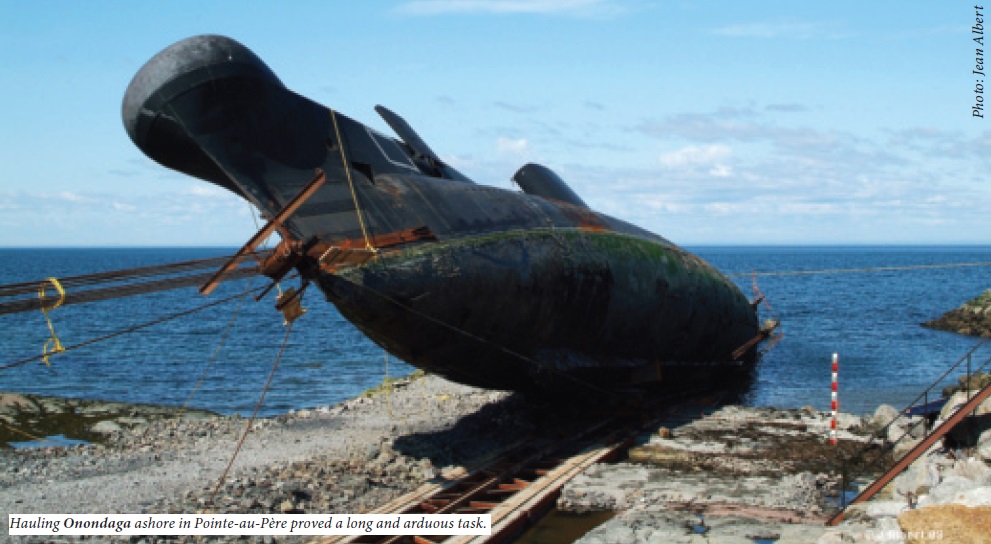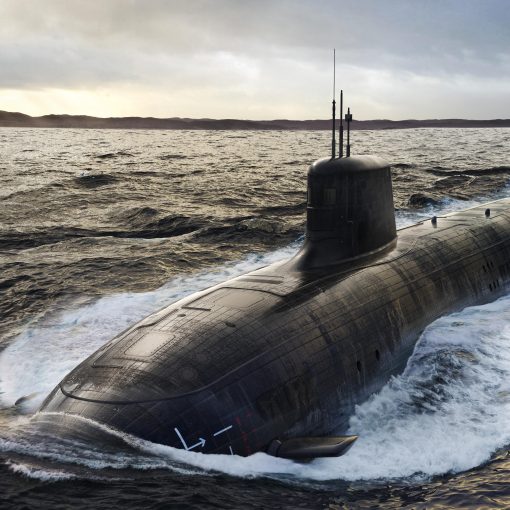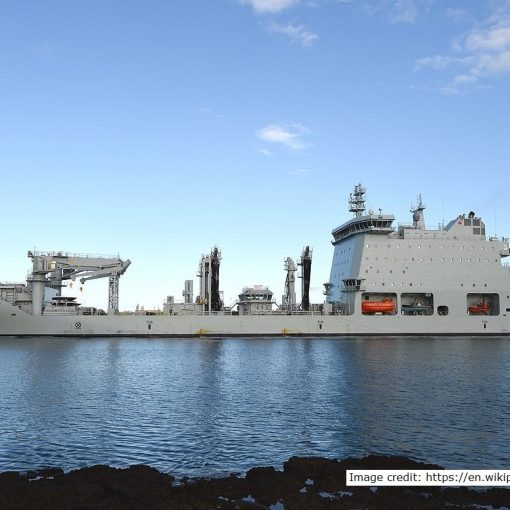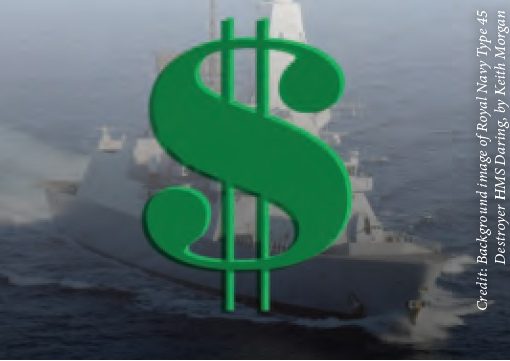The Canadian Centre for Policy Alternatives and the Rideau Institute jointly released a report on 11 June by Michael Byers and Stewart Webb entitled That Sinking Feeling: Canada’s Submarine Program Springs a Leak. The CFPS Maritime Security Policy Program Research Team has examined the report in detail and our evaluation of it follows.
Byers and Webb’s desire to stir debate around the future of submarines is commendable. The introductory section of the report contains an accurate summation of the problems experienced to date with the Victoria-class submarines and it raises important general policy questions to a wide audience. However, we find that there has been insufficient academic rigour in the development of the authors’ arguments. The case for change relies primarily on rhetoric, a very selective use of facts, and incomplete analysis.
The release of the report was a well-crafted event, accompanied by media releases and an opinion piece in the Globe and Mail, all of which appears to be designed to create a groundswell of opinion against submarines and the government’s system of defence procurement. We do not hold the same opinion as presented by the authors that the public is either observing serious mismanagement in the navy or being misled by secret decisions in government. In our view, this is simply implausible and the report does not offer substantive evidence to prove these allegations.
The authors base their conclusions on the scope of the National Shipbuilding Procurement Strategy and a history of technical and managerial problems with the submarines. While it may seem that the report is calling for a debate on the future of submarines in Canadian maritime security, Byers opinion of submarines is already on the record: “I don’t see a strong case for Canada to require submarines.” The real motivation for the report is suspect, therefore. While interesting questions are raised, our conclusion is that the authors deliberately ignore some of the most obvious answers and missed an important opportunity to present sound academic analysis.
The entire report hangs on three underlying assertions. Our analysis of the same three key points will be presented in the interest of prompting a balanced discussion of the issues.
The assertions
The first major assertion is that the omission of submarines from the National Shipbuilding Procurement Strategy indicates the government has already made a decision on the future of submarines or that the government has no plan.
The second is that the Victoria-class submarines have a history of design, manufacturing, and operational problems that will continue into the future.
The final assertion is an implied position that options for renewal of the submarine fleet do not need to consider the operational requirement.
The omission of submarines from the Naval Shipbuilding Procurement Strategy
The government announced the National Shipbuilding Procurement Strategy with great fanfare on 03 June 2010. It was originally a Department of National Defence (DND) initiative, which evolved into a multi-departmental secretariat with participation from DND, the Department of Fisheries and Oceans (Canadian Coast Guard), Industry Canada, and Public Works and Government Services Canada.
The open professional literature on the development of the strategy reveals that in early 2009 senior naval engineers in the Department of National Defence were advocating for a National Shipbuilding Procurement Strategy as a way of responding to a unique challenge faced by the department. It was a bottom up solution to a national strategic problem resulting from the following issues:
- The government had announced fleet renewal projects for DND and the Department of Fisheries and Oceans (DFO) with acquisition costs worth approximately $43B,
- The failure of two ship acquisitions in 2008 happened in good part because the department had not maintained essential expertise after the delivery of the Canadian Patrol Frigate;
- The Canadian shipbuilding industry had received no substantial or complex new shipbuilding work since the mid-1990s, creating a “boom and bust” cycle in the marine industry and leading to atrophy of industrial infrastructure, design capacity, marine supply lines, and skilled labour; and
- The government’s “build in Canada” approach to shipbuilding, which was intended to create a robust Canadian shipbuilding capability, could seriously worsen the “boom/bust” cycle unless it managed federal fleet procurement to even out the workload in Canada.
The case for a national shipbuilding strategy was first made by then-Captain(N) Pat Finn at a conference at Queens University in 2009. Finn, now a Rear-Admiral and Chief of Staff at DND’s materiel support arm, argued that government commitment to the industry was key to a more competent and efficient world-class shipbuilding capability. A long-term government strategy for building surface ships would provide an opportunity to take advantage of known shipbuilding demand to provide more predictable work for Canadian industry. A continuous flow of work would allow industry to improve infrastructure plus stabilize, renew, and grow a skilled Canadian workforce. Contrary to the claims made in the report, Finn offered a bottom-up solution to a national strategic problem, which was the boom and bust cycle in industry caused by government practices with shipbuilding projects.
Byers and Webb infer that the NSPS somehow reflects high-level government strategy about submarines. The fact that submarines are not in the NSPS does not mean that the department or the government has made any “secret decisions.” DND considers military procurement in plans updated and revised annually. These plans look at all navy, army and air force procurement projections. Submarines are not yet at a stage where they need to be built into these plans.
On 27 February 2012, Vice–Admiral Maddison, the outgoing commander of the Royal Canadian Navy testified before the Senate Standing Committee on National Security that the navy is now conducting an analysis to see if the current submarines could be extended beyond their originally forecast end of life to about 2030. He went on to say: “Assuming that Canadians will continue to see submarine capability as a critical capability for our Canadian Forces, I would envision initiating a next-generation submarine discussion within the next three or four years, in order to go through the various procurement and project planning approval and funding gates to ensure that there is no gap in submarine capability.” Our Research Team concludes that the current state of the submarine program is at least three or four years away from any official decision about beginning the project-planning process. Neither the government nor the navy has formed any plans regarding future submarines. Therefore, the Research Team finds that the NSPS is what it purports to be: a tool for the government to implement a cross-departmental integrated procurement strategy for surface ships only.
Submarines are not in the NSPS because they would not help create the stable demand industry needs to avoid boom and bust activity. The reason for this limitation is that the design and construction of submarines and surface ships are not alike. In many ways submarines share more in common with space ships than surface ships. Safety is a primary concern. Submarines are designed to operate self-contained under great pressures in a very hostile environment. Their design problems and issues are not shared with surface ships. Ship and submarine designs may use the same core naval architecture, engineering knowledge and trades’ skills, but they are applied differently. These are just some of the reasons that American shipyards specialize in either submarines or surface warships, but never both.
Adding a submarine component to the NSPS would be like asking a car plant to retool tour buses. The retooling would create a mini boom and then a bust at the plant that would kill efficiency. The simple reason that submarines are not included in the shipbuilding strategy is that a small fleet of approximately four or even as many as eight submarines would detract from the goal of the strategy. There is no synergy gained by adding submarines to a coordinated approach for surface ship construction. Submarines are not included in the NSPS because it makes no military, economic or industrial sense to do so. The number of submarines cannot reasonably support continuous work, so adding them to the NSPS would promote the very “boom and bust” cycle that the strategy was intended to solve. Therefore, we concluded that there is no government conspiracy behind the NSPS with regard to submarines.
The history of Victoria-class problems
Byers and Webb assert that the history of design, manufacturing and operational problems of the Victoria-class indicates a future fraught with trouble. They select historical examples of design problems to bolster their deduction that the submarine program most likely suffers from gross mismanagement and that Canada’s submarine program will end through neglect and obsolescence. The authors also suggest that a low purchase price was an indicator that the design had flaws. They ignore the possibility that the price might reflect an accurate assessment of the engineering challenge Canada faced in bringing the submarines into service in accordance with our national operating standards.
No one familiar with the acquisition of the submarines from Great Britain would deny that the project suffered its share of errors and misfortune. Given the challenges that the navy has faced getting these submarines operational, hindsight would certainly suggest that their work and training plan was too optimistic. However, much more evidence is necessary to support a claim that the British knew there were problems or that the submarine program was mismanaged by Canada.
An observation by Chief of Review Services, DND’s audit organization, released in May 2003 and entitled “Review of the Submarine Acquisition/Capability Life-Extension Program 7050-11-33 (CRS)”, identified that the project under-estimated the challenges associated with submarine reactivation and the Canadianization work to be done. An assumption that off-the-shelf procurement is generally low risk proved wrong. Underestimating the technical risks certainly contributed to an overly optimistic schedule. So did a number of technical issues that could not have been foreseen.
Submarines operate in a harsh environment and face tremendous strains on equipment. That is a general fact of life for naval equipment but it is especially true of submarines. It is important for our sailors that submarines are safe to operate. Canada has an excellent record of safe submarine operation compared to other navies.
Canadian ingenuity overcame all the problems Byers and Webb identified. The report would be more balanced if it included recent evidence of the current state of Canada’s submarines. Vice-Admiral Maddison, once again testifying before the Standing Senate Committee on National Security and Defence on 25 February 2013, provided the following:
“2012 was a remarkable year … [HMCS Victoria] deployed to RIMPAC exercise, fired a torpedo, sank a ship, returned, … and is now deployable for Canada. HMCS Windsor is about a year behind, … [Windsor] undocked earlier last year [2012] … and will follow the same path to readiness as Victoria did.”
The facts are these: Canada now has two submarines operating, one on either coast. The damage to HMCS Windsor’s diesel generator will be repaired by late summer or early fall and is not considered to be a class-wide problem. HMCS Chicoutimi, which experienced the damaging fire on it transfer voyage to Canada, will undock in 2013 and follow the same path to readiness as Windsor, but another year behind. That leaves HMCS Corner Brook, as planned, as the boat going into ‘deep maintenance’ status. The navy will reach an operational steady state over the next couple of years with one submarine in deep maintenance, two at high readiness, and the third available but at a reduced state of readiness. This is a far cry from the sorry state Byers and Webb would have readers believe.
Byers and Webb’s proposal to quit or start over is a solution looking for a new problem - one that would not have the benefit of information and experience gained from operating the current submarines long enough to gain a solid understanding of their strengths and weaknesses. When the RCN begins in the next five years to define the requirements for the next generation of Canadian submarines they must be able to say exactly how the Victoria-class submarines exceeded, met or failed to meet requirements. Starting a new requirement process by saying the navy does not know whether or not the existing submarines performed satisfactorily in operational settings is a poor way to start the search for the next one.
Options for renewal
The weakness of the section stems from a fundamental error of assuming all diesel-electric submarines are the same. Submarines come with different capabilities, roles, and costs, so it is critical to ensure that any alternative to the Victoria-class meets a carefully planned capability requirement. Buying a new submarine is not that different from choosing a family’s next new car. This analogy may seem far-fetched, but no one would buy a car without having some idea of what the vehicle should do and what price is affordable.
A better comparison for the cost of options in the report would have been the Australian Collins-class. These submarines are sufficiently similar in mission and capability to offer a fair comparison. The Australian Submarine Corporation identifies that a Collins-class submarine costs around $1B, which is considerably more that the alternatives in the report. The Canadian Chief of Review Services report on the submarine program identified a decade ago that “The cost of these [Victoria-class] submarines, relative to that projected for the acquisition of new boats – $3B to $5B – established a significant margin for value.” The MSPP Research Team concludes that, despite the unanticipated maintenance and repair costs, a significant margin for value still exists even if part of the operational life must be discounted.
Conclusion
Promoting debate around the future of submarines is a worthwhile endeavour. Canadians should welcome an examination of the roles, missions and tasks of submarines. We do not agree that speculating that some form of conspiracy exists about their future is helpful. If Byers and Webb want to make a case for a navy without submarines, they should spend sufficient time to develop a coherent policy argument. Speculation may have a place when informed commentators consider serious questions with little information. The goal for everyone considering whether Canada needs submarines should be a search for accurate facts.






One thought on “A Review of “That Sinking Feeling: Canada’s Submarine Program Springs a Leak.””